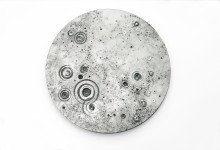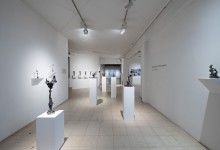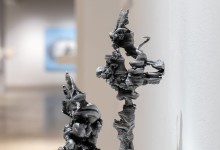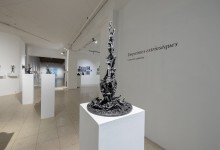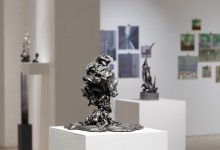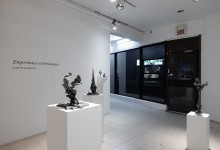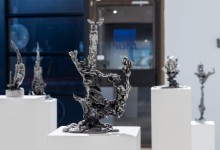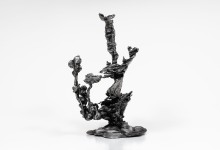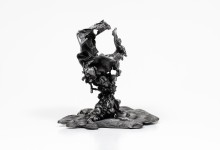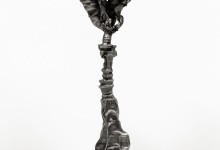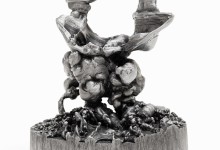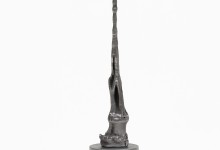Opening reception: Saturday, November 5, 2022 from 3:00 p.m. to 5:00 p.m.
Laurent Lamarche : Empreintes extrinsèques
Text by Carina Bergmann
At first glance, the fields of art and science may seem like two incompatible subjects that exist on opposite sides of a spectrum, though historically speaking they have shared an intimate relationship. A famous example can be found in German biologist Ernst Haeckel’s book ‘Art Forms in Nature’, published around 1900, where his aims to combine scientific documentation with art become apparent. A similar fascination for such forms can be encountered in the artworks of Laurent Lamarche. In this exhibition Empreintes extrinsèques Lamarche continues to explore the connections between humans and nature inspired by research laboratories.
In his new series of artworks, he focuses on the transformative potential found in object and being, concentrating on the material of wax. Through its malleability and flexibility, it evokes the idea of continuous information. Its nature is indexical, capturing the slightest trace and imprints of the most subtle textures. Following the idea of a laboratory, Laurent Lamarche experiments with the physical characteristics of wax and its oscillation between solidity and liquidity.
Two main experiments are explored in this exhibition. The movement of water and understanding the invisible manifests itself in FUSE. Here Lamarche takes an interest in expressing the imperceptible laws of physics in a form perceivable to the eye by injecting molten wax into small cold pools of water. Immediately after making contact, the wax hardens and instantaneously forms its final shape. Due to being lighter than water, it captures the flow of the liquid and the textures it induces, thus making them visible. These forms resulting from an unpredictable process are then cast in aluminum, revealing the memory of water in motion.
The second idea follows the capturing of the invisible via fossilization in formation, a continuation of the Fossile series. In Fragment, the notion of trace is formed through the transformational process of wax and the subtraction of matter. Though the liquid potential of the material isn’t the focus, but rather its characteristics in the solid state and its malleability when touched by heat. Once the engraving process is finished the result is cast in aluminum. The combination of the metallic character of the sculpture with the addition of patina gives the objects an atemporal quality, resulting in the evocation of the imagination trying to place it in past and future.
The third axis of this artistic laboratory approaches working with aluminum in a different way. Moving away from transferring wax to metal, Lamarche works directly on the plate using different tools to play with the aluminum and therefore exposing its evocative power. The craters that are formed in the artworks of Canyon, together with their circular shape and shiny surface both awaken associations with the moon and inverted petri dishes.
With his experimental works coming together under the umbrella of an imaginary research laboratory for art, Lamarche breaks down boundaries between the seemingly incompatible fields of art and science, revealing the important role of the artist as a researcher and experimenter and thus the connection to science.




